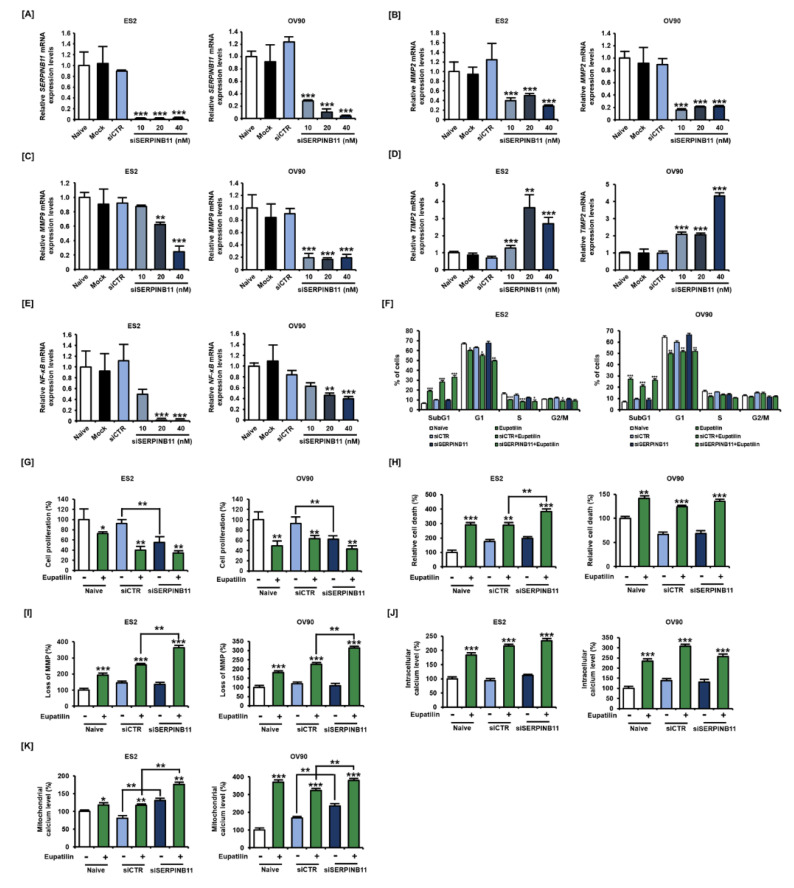Figure 6.
The functional role of SERPINB11 knockdown in the transcriptional levels of ovarian cancer-associated genes and anticancer activity by eupatilin in ovarian cancer cells. (A) Dose-dependent inhibition of SERPINB11 using specific target siRNA by transfection using Lipofectamine 2000. ES2 and OV90 cells were transfected with transfection reagent alone (Mock), non-specific control siRNA (siCTR), and naïve cells were used as negative controls. (B–E) In the absence of SERPINB11 via siSERPINB11 transfection, transcriptional levels of ovarian-cancer-associated genes MMP2 [B], MMP9 (C), TIMP2 (D), and NF-κB (E) were evaluated in ES2 and OV90 cells. (F) Ovarian cancer cells were treated with an optimal concentration of eupatilin (50 μM) under the presence or absence of SERPINB11, and PI-dependent DNA content was analyzed by flow cytometer to estimate cell cycle distribution. (G–H) Anti-proliferative effects (G) and apoptosis induced (H) by eupatilin under SERPINB11 abrogation in ES2 and OV90 cells. (I) After eupatilin treatment, the loss of MMP was analyzed by the ratio of red and green fluorescence by JC-1 staining under the presence or absence of SERPINB11. (J–K) Intracellular (J) and mitochondrial calcium (K) levels were measured by Fluo-4 and Rhod-2 fluorescence intensity, respectively, under the presence or absence of SERPINB11 in ES2 and OV90 cells. The experiments were performed in triplicate. Data represent the mean ± standard deviation, and asterisks indicate that the effect of treatment was statistically significant (* p < 0.05, ** p < 0.01, and *** p < 0.001).

